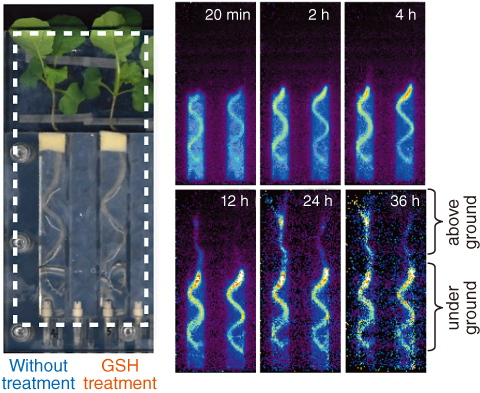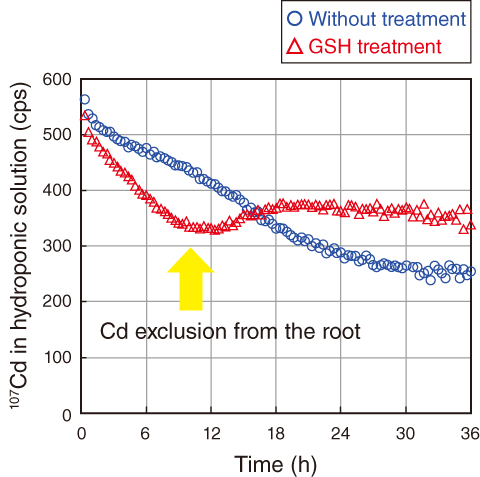
Fig.5-26 Root-zone imaging of Cd in oilseed rape plants

Fig.5-27 Time course of 107Cd radioactivity in solution
Reducing cadmium (Cd) accumulation in crops is a globally important food safety requirement. To reach this goal, studies have proposed numerous approaches such as cleansing of Cd-contaminated soil by crops that readily accumulate the metal, and exploring the crop cultivation conditions that minimize Cd uptake. In promoting these studies, it is very important to observe directly the process of Cd uptake from the roots. We have been developing a non-invasive imaging method called the positron-emitting tracer imaging system (PETIS) that can visualize the movement of various radioactive elements in intact plants. However, PETIS observations have been limited to the aboveground parts of the plant, because it was considered that, if the roots were immersed in a hydroponic solution containing a radiotracer, the visualization of the element of interest through the roots would be hindered by the intense radiation.
In this study, we developed a specialized vessel that minimizes the volume of the hydroponic solution in the field of view. The aim was to improve the counting efficiency of radiation signals from the roots. Within the vessel, the movement of the elements of interest into and through the roots can be directly observed. Using this newly developed “root-zone imaging,” we observed the movement of a radioisotope of Cd (107Cd) in oilseed rape plants. The movement of the radioisotope from the roots to the aboveground parts was suppressed by feeding a tripeptide, glutathione (GSH), to the roots (Fig.5-26). Moreover, a detailed analysis of the dynamic image revealed that Cd was partially excluded from the root to the solution after feeding with GSH (Fig.5-27). From these results, we deduced that GSH activates the exclusion of Cd from the roots, suppressing its movement to the aboveground parts.
This study suggests that the application of GSH is very promising in the development of a technique for reducing Cd in crops. Furthermore, as the root-zone imaging is applicable to other elements, it will facilitate the understanding of general mechanisms by which plants take up various nutrients and environmental pollutants.
The present study was partly supported by Japan Society for the Promotion of Science (JSPS) KAKENHI Grant-in-Aid for Scientific Research (B) (Nos.17380194, 19380185, 23380155, 23380194).